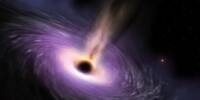Black holes are fascinating objects, but they do not produce echoes in the traditional sense. A black hole is a dense region of space with such powerful gravity that nothing, not even light, can escape its gravitational pull. As a result, it emits no light or other signals that could be detected as an echo.
A multinational team of scientists revealed that Sagittarius A* (Sgr A*)1, the supermassive black hole at the center of the Milky Way, awoke after a long period of hibernation some 200 years ago.
The team, lead by Frédéric Marin2, a CNRS researcher at the Astronomical Strasbourg Observatory (CNRS/University of Strasbourg), has disclosed the past awakening of this colossal object, which is four million times more massive than the Sun. Nature published their findings. Over the course of one year at the beginning of the nineteenth century, the black hole swallowed up cosmic things that came too close to it before returning to a state of dormancy.
The scientists employed NASA’s IXPE (Imaging X-ray Polarimetry Explorer) satellite3 to conduct their research, which was able to identify the polarization of this X-ray radiation with high precision and also determine its source, which had previously been impossible.
Because the distance between Sgr A* and our planet is too large (approximately two billion times the distance between the Earth and the Sun), no effect was felt on Earth. However, the discovered X-ray echo, which was emitted around 200 years ago, shows that the original intensity was at least a million times stronger than that emitted by Sgr A* today.
To get an idea of how intense the X-ray radiation got when the black hole awoke from its dormant state, imagine a solitary glow-worm hidden in a forest suddenly becoming as luminous as the Sun. These findings explain why galactic molecular clouds near Sgr A* are shining more brightly than usual: it is because they are reflecting the X-rays emitted by Sgr A* 200 years ago.

The scientists employed NASA’s IXPE (Imaging X-ray Polarimetry Explorer) satellite3 to conduct their research, which was able to identify the polarization of this X-ray radiation with high precision and also determine its source, which had previously been impossible. Polarised X-ray light4 acts like a compass, pointing directly to its source, Sgr A*, despite the fact that it is now nearly dead.
The scientists are continuing their research on Sgr A* in order to discover the physical mechanics required for a black hole to transition from a dormant to an active state.
The speed of light and the distances involved limit our existing observational technology. By looking at faraway objects in the universe, we can view cosmic events that occurred thousands, millions, or even billions of years ago. Observing events that occurred only 200 years ago within our own galaxy, on the other hand, is not possible with our current capabilities.
Footnotes
- Pronounced ‘Sagittarius A star’.
- The scientists are from laboratories in Japan, the United States, Italy, Hong Kong, Canada, Russia, Germany, the Czech Republic, the United Kingdom, Finland, Spain, the Netherlands, China and France (Observatoire Astronomique de Strasbourg (CNRS/Université de Strasbourg) and Institut de Planétologie et d ‘Astrophysique de Grenoble (CNRS/Université Grenoble Alpes)).
- They combined this data with that obtained from the European Space Agency’s XMM-Newton and NASA’s Chandra missions.
- Polarisation refers to the preferred direction of the oscillations of the electric field of a light wave.
















